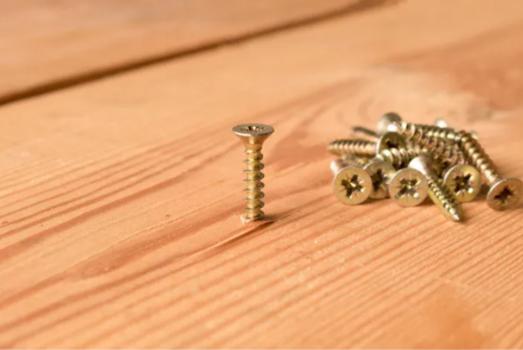How Are Wood Screws Used In Attaching Hardware to Wood?
Attaching hardware to wood using wood screws is a common task in woodworking and home improvement projects. This includes mounting hinges, brackets, locks, handles, and other hardware components to wooden doors, furniture, cabinets, and various structures.
Here’s how to use wood screws for attaching hardware to wood effectively:

- Selecting the Right Screws
Length: Choose screws that are long enough to securely anchor the hardware into the wood, but not so long that they protrude out the other side of the wood.
Diameter: Make sure the screw diameter is suitable for the hardware’s mounting holes and the wood’s density to provide a secure fit without causing damage.
Head Type: Typically, flat head or countersunk screws are used for hardware attachment so that the screw heads can sit flush with or below the surface of the hardware.
Material: Use screws made of a material that is compatible with the hardware and the environmental conditions (e.g., corrosion-resistant screws for outdoor use).
- Positioning the Hardware
Place the hardware on the wood at the desired location. Use a pencil or marker to mark the screw hole locations on the wood through the hardware’s mounting holes.
- Pre-drilling Pilot Holes
Pre-drill pilot holes at the marked locations. The pilot holes should be slightly smaller than the core diameter of the screws to ensure a tight fit. This step is crucial to prevent the wood from splitting, especially in hardwoods or near the wood’s edge.
- Countersinking (If Needed)
If the hardware requires the screw heads to be flush with its surface, and you’re using flat-head screws, you may need to countersink the pilot holes. Use a countersink bit that matches the size of the screw heads.
- Driving the Screws
Align the hardware over the pilot holes.
Using the correct screwdriver or drill bit (matching the screw’s drive type), drive the screws through the hardware’s mounting holes and into the wood. Do not over-tighten, as this could strip the wood or damage the hardware.
- Checking and Adjusting
After all screws are in place, check the alignment and tightness of the hardware. Adjust if necessary by slightly loosening and then retightening the screws for better alignment.
- Final Touches
For aesthetic purposes or to prevent tampering, some installations might require covering the screw heads with decorative caps or plugs that match the hardware or wood finish.
Tips for Success
Use the right tools: A drill or screwdriver that fits the screw head properly will make the job easier and prevent damage to the screw.
Avoid over-tightening: This can strip the wood or damage the hardware. If the hardware needs to be tightly secured, consider using larger screws or adding more screws, if the hardware design allows.
Consider the wood type: Softer woods might not require as much force to drive the screws, whereas harder woods will require more effort and possibly larger pilot holes.
By following these steps, you can securely attach various types of hardware to wood, ensuring the installation is functional and visually pleasing.
Xinchi is a trustworthy fastener company, especially in furniture nuts. We have a factory, founded in 2007(Factory Video). And we are the designated fastener supplier to“STAPLE”. As a trusted fastener supplier, Xinchi can offer a wide range of high-quality fasteners, including T nuts, screws, bolts, rivets, washers, etc. If you want to know more about fasteners or want to wholesale fasteners, please feel free to contact us. And then our experienced and expert service team will reply to you as soon as possible.

